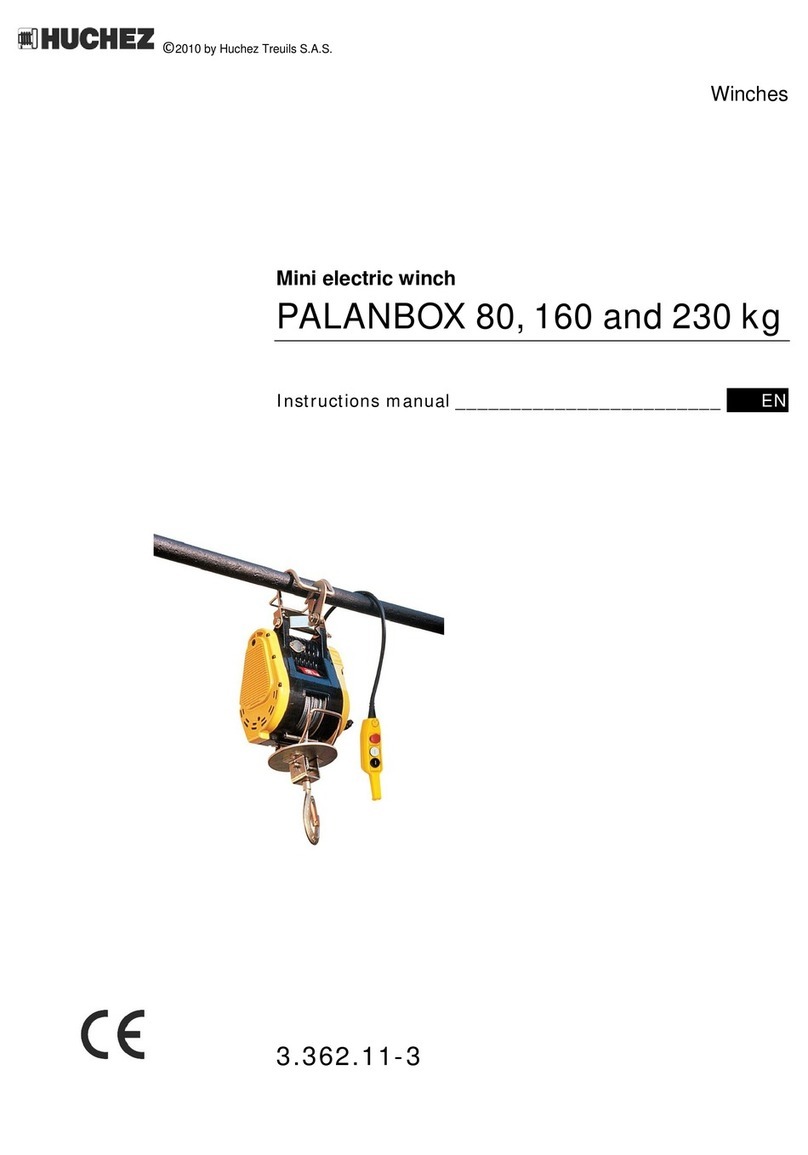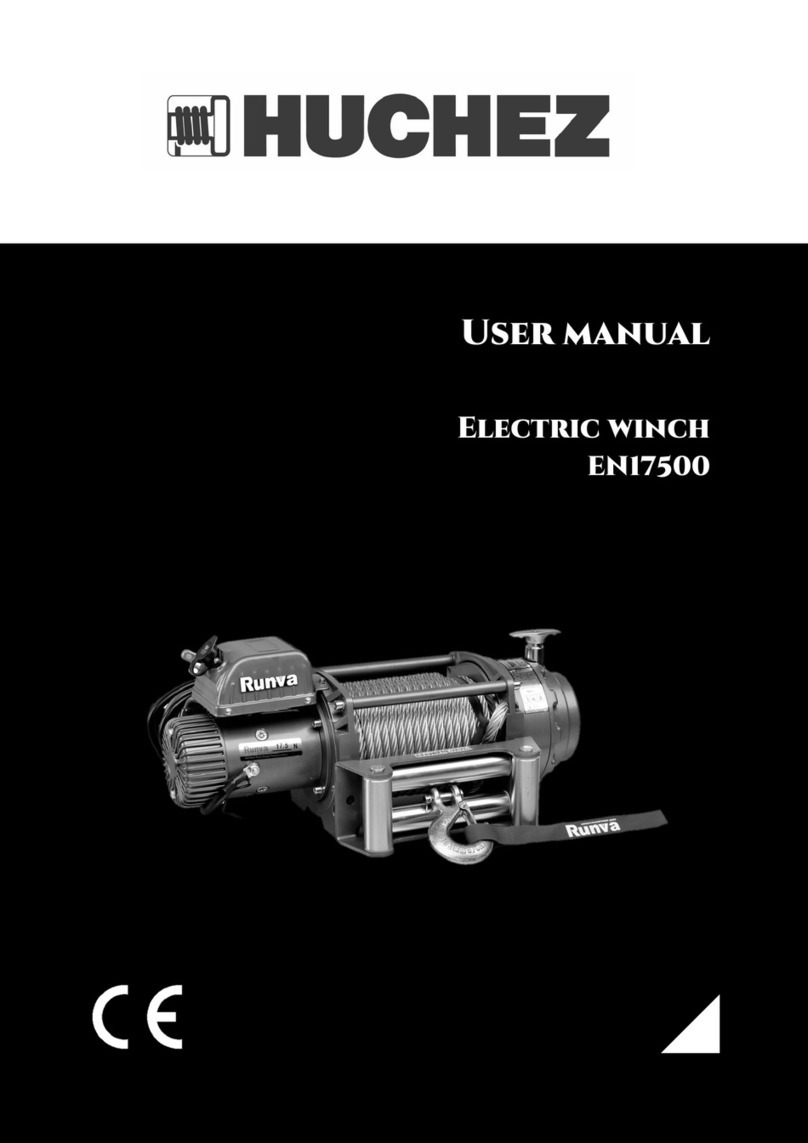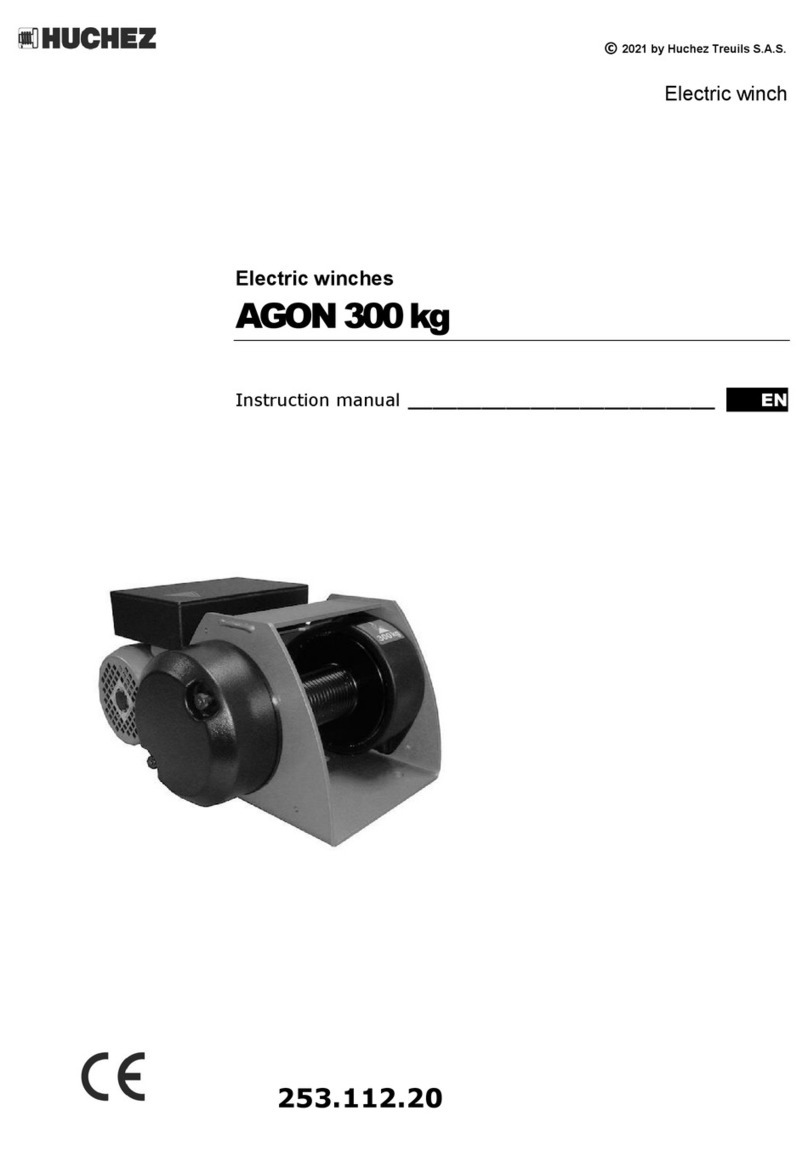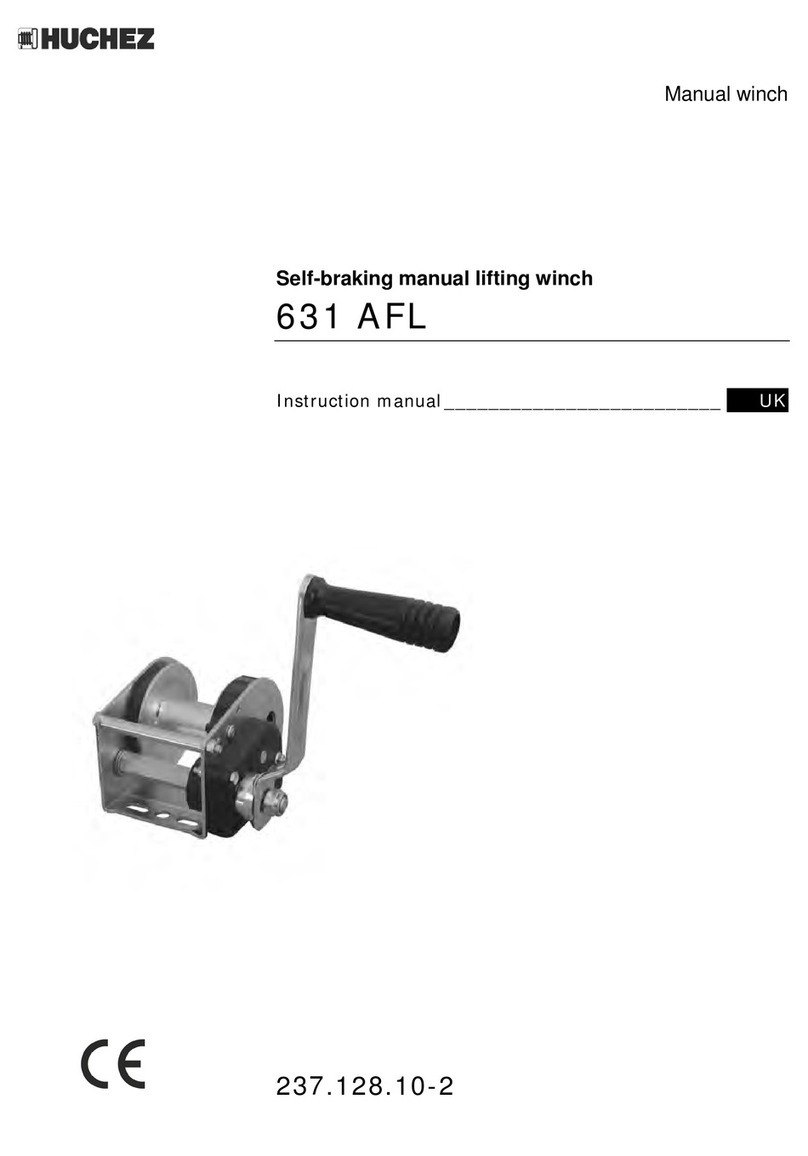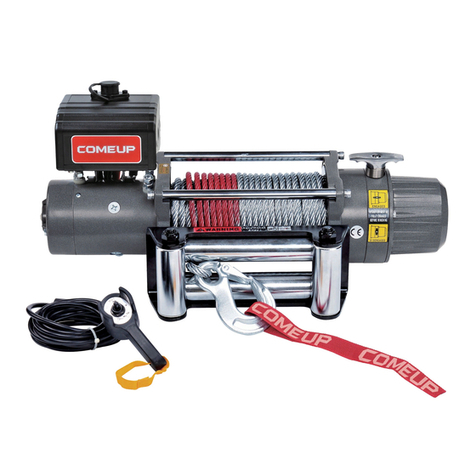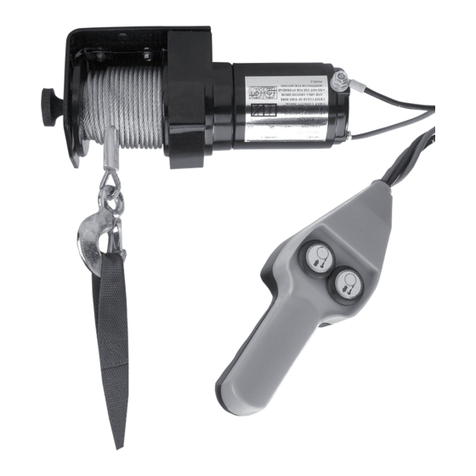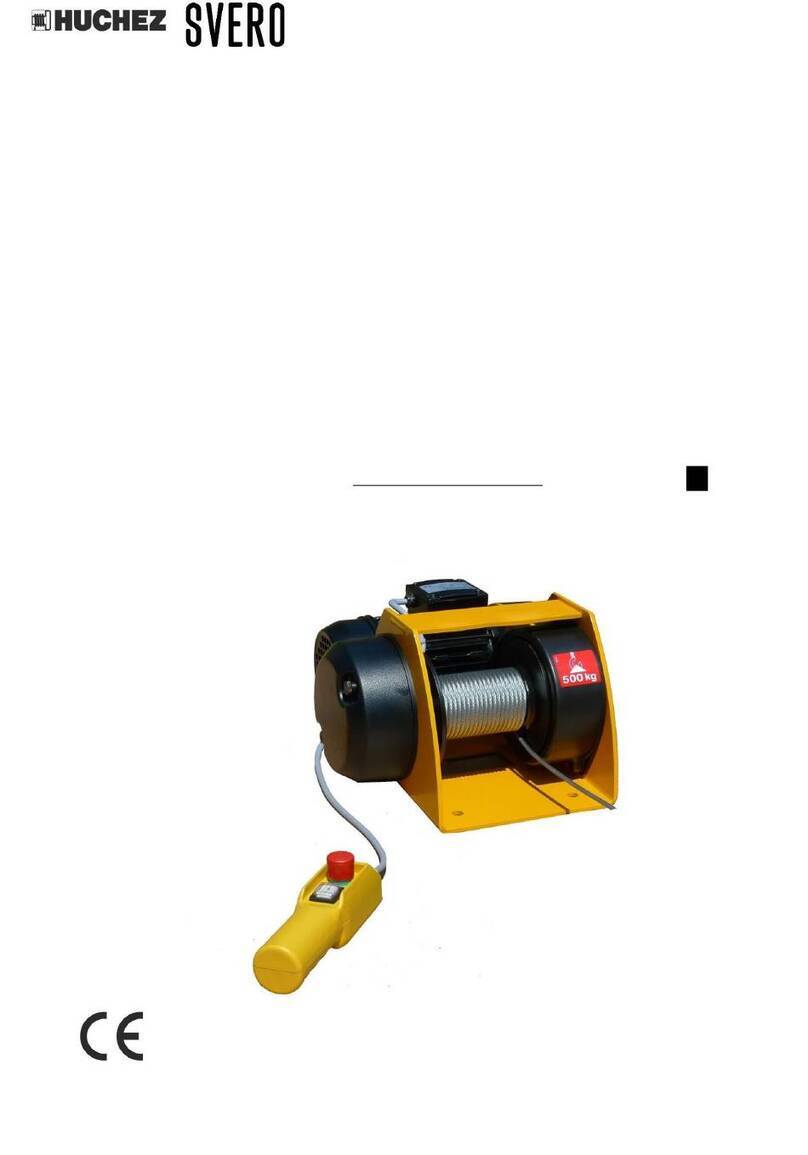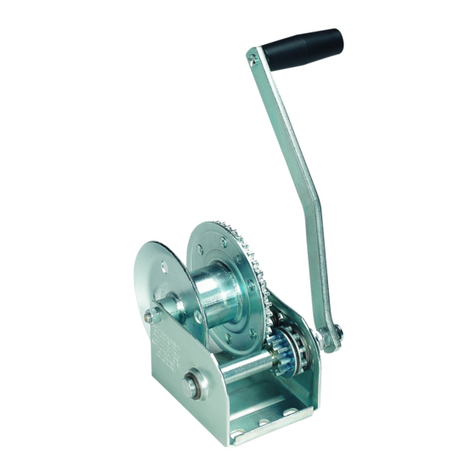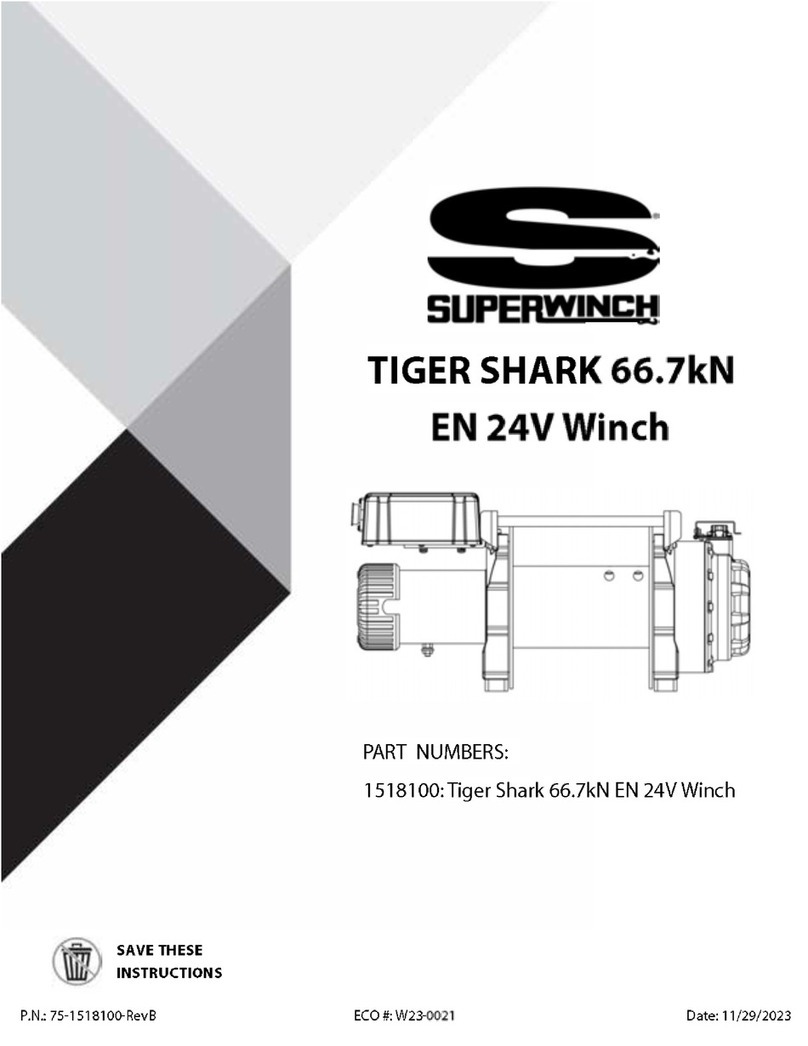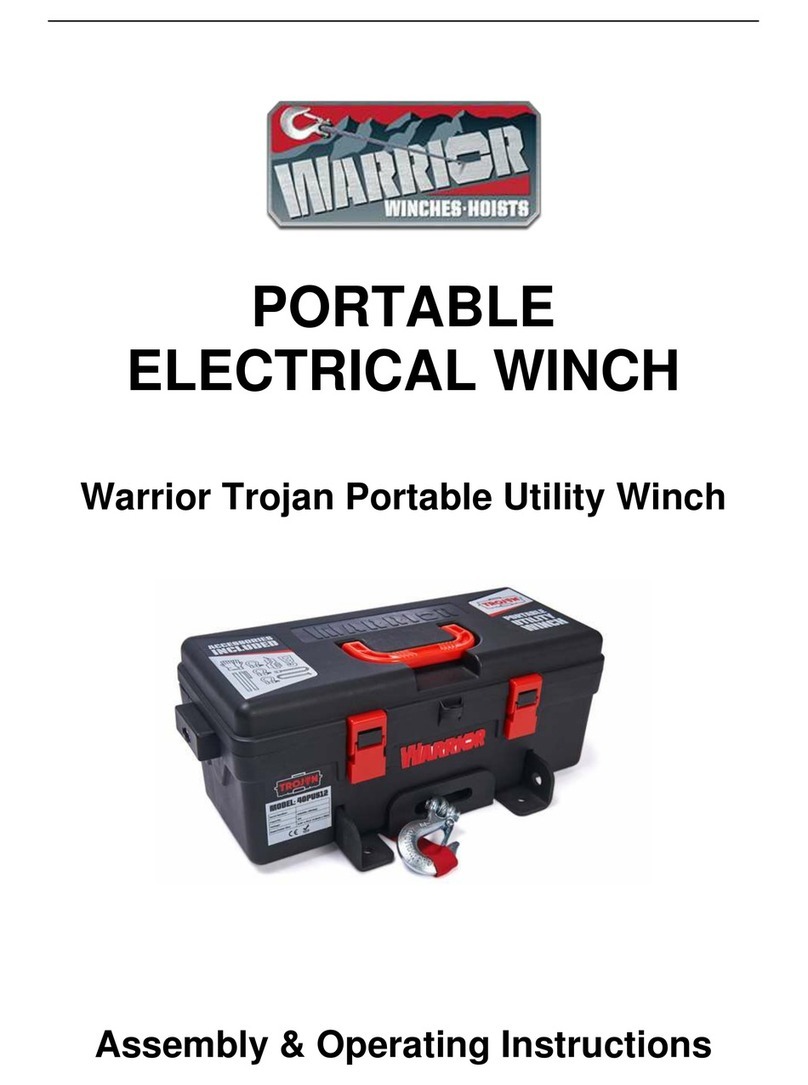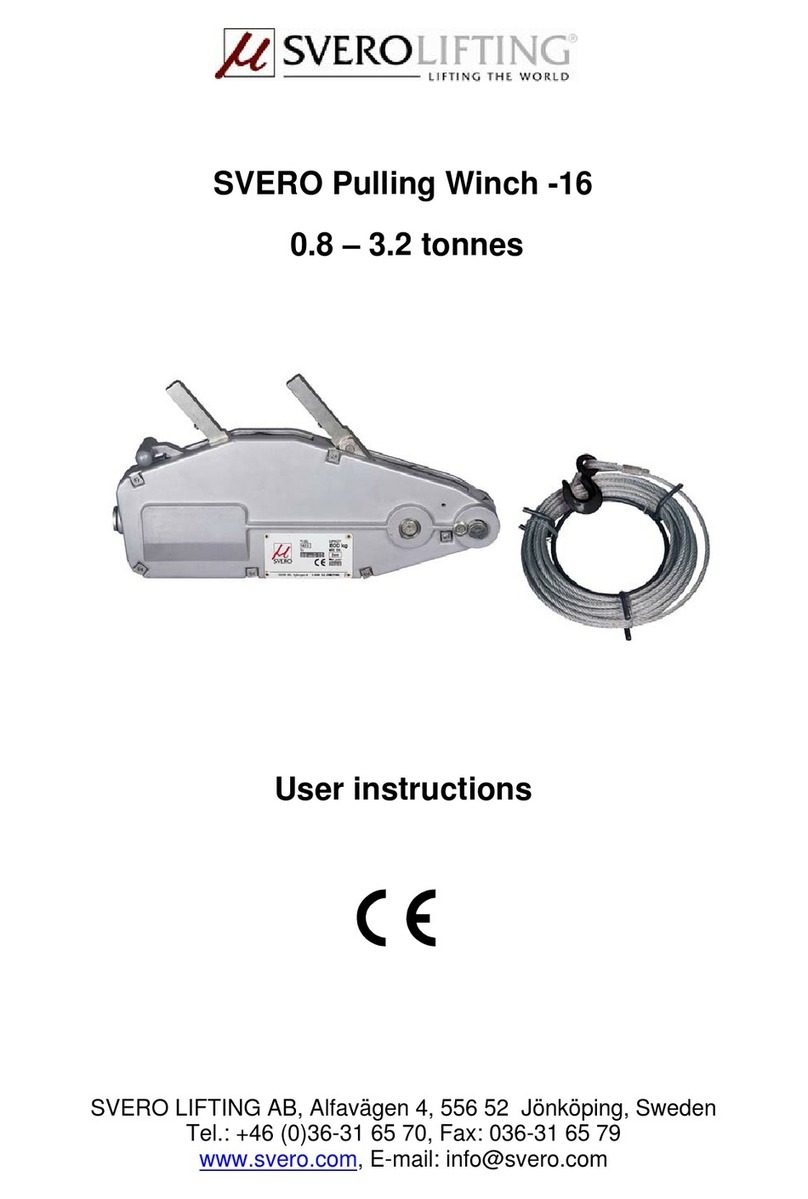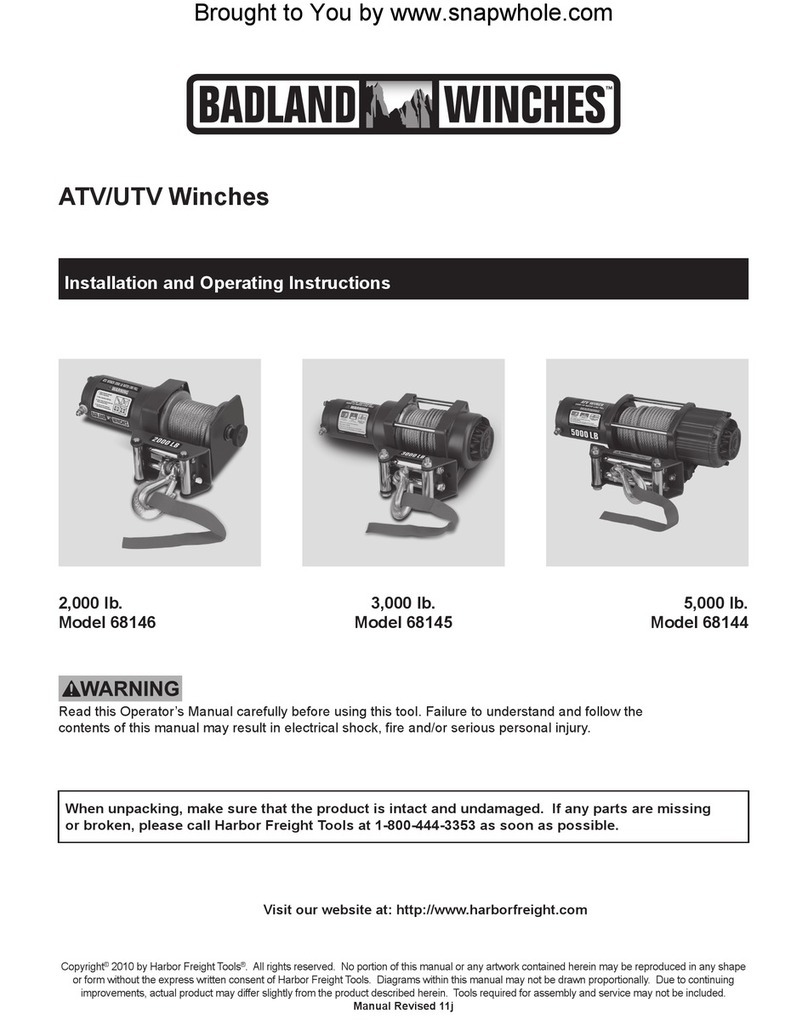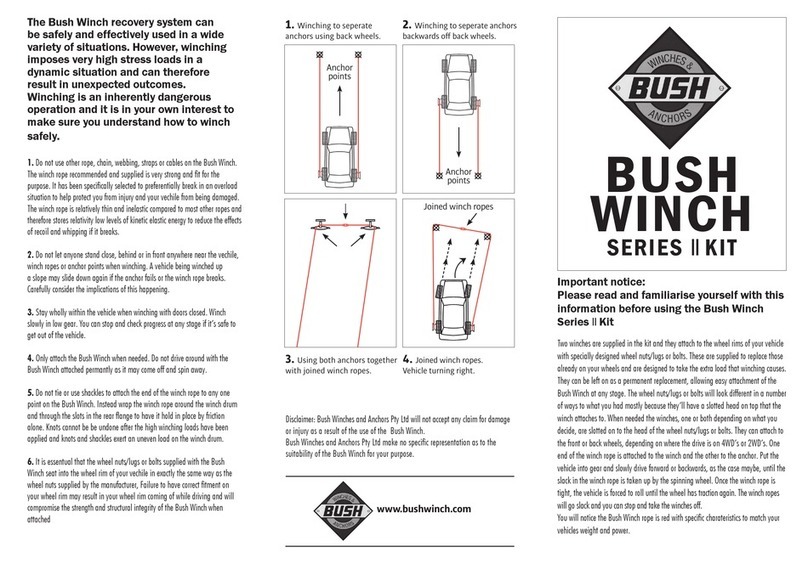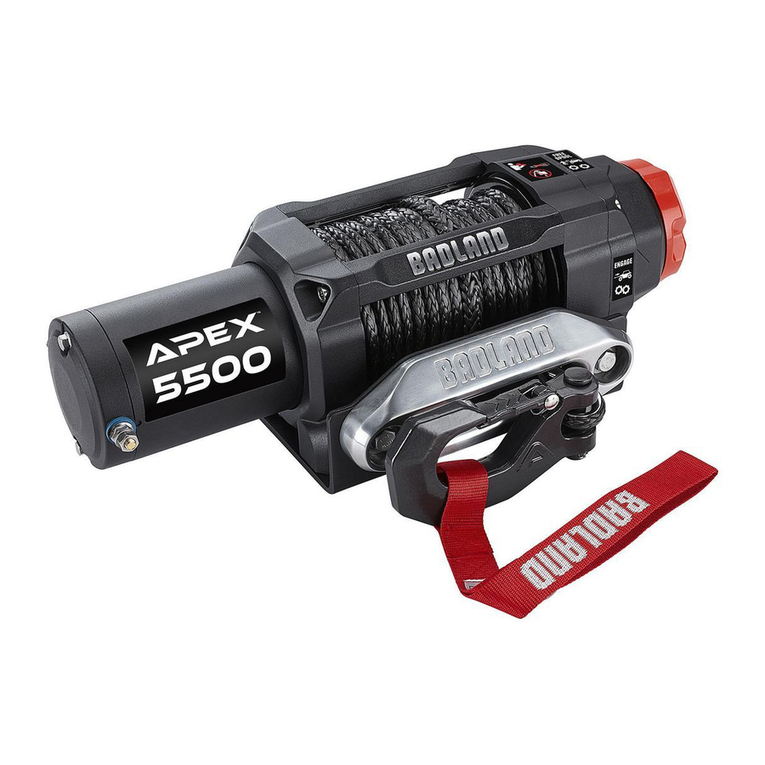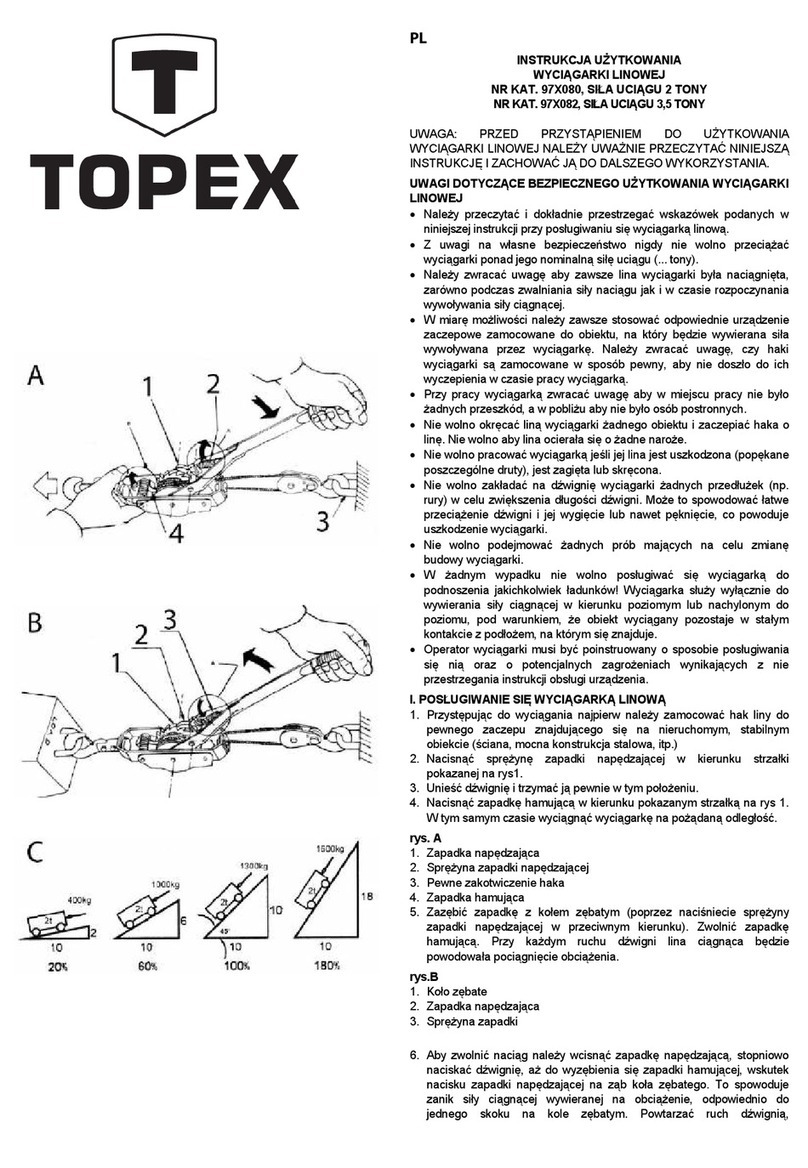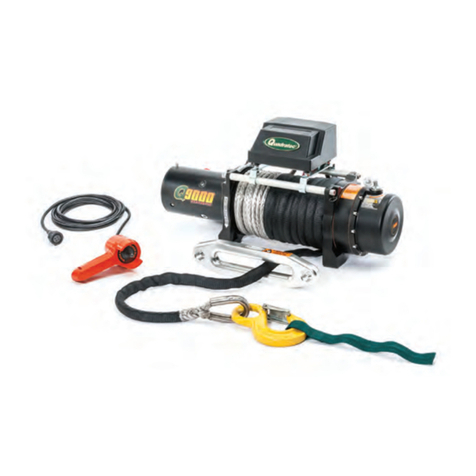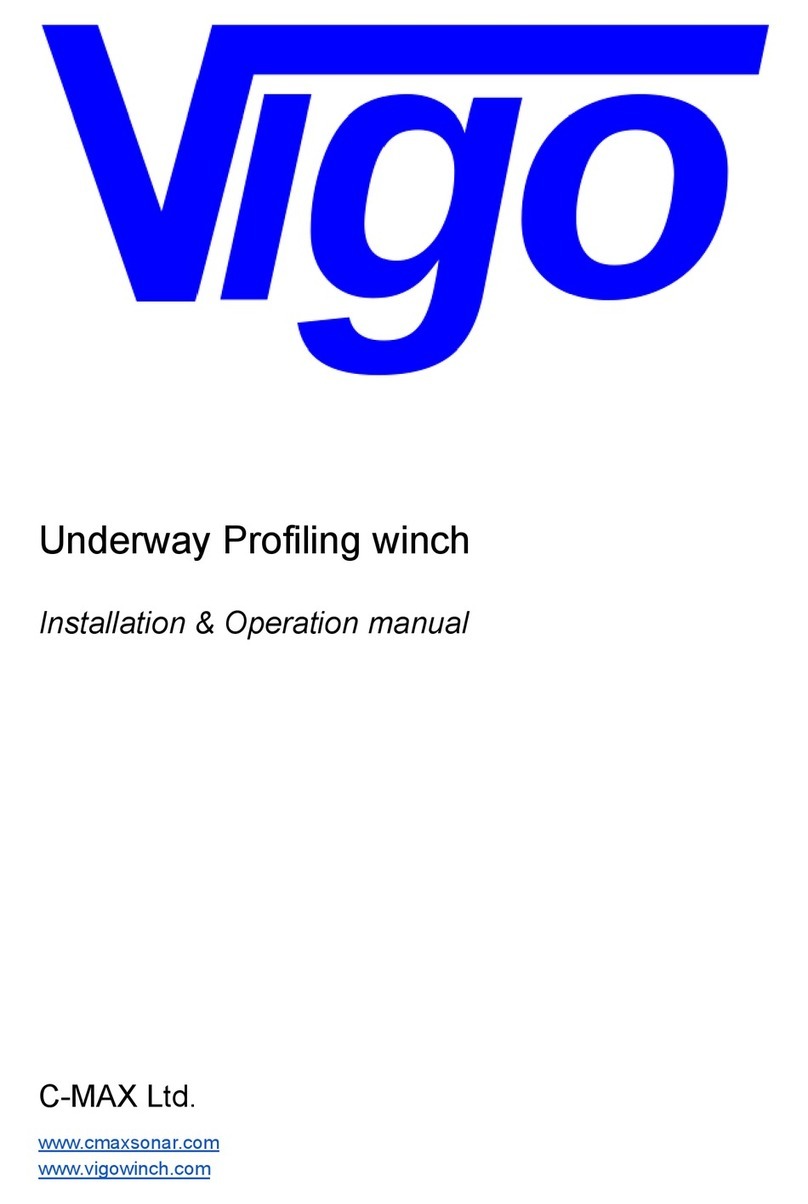
EN - ENGLISH - 09/2019
Translation of original instructions 3EN Reproduction is prohibited
02GENERAL SAFETY INFORMATION
All users should read the usage instructions carefully before first use. These instructions should
enable the user to familiarise themselves with the winch and achieve the best performance
possible. The usage instructions contain important information about how to use the winch
correctly and safely. By acting in accordance with these instructions, you will avoid hazards,
reduce repair costs, reduce downtime and increase reliability and extend the life of the winch. The
instruction manual should always be available at the winch’s point of use. In addition to the usage
instructions and the relevant regulations for the prevention of accidents, it is also important to
consider the applicable health and safety regulations in force in each country.
The winch can produce significant pulling forces. If it is used in an unsafe or inappropriate way, it
could result in damaged equipment, serious injury or death. Throughout this manual, you will find
the following symbols, indicating cautions, warnings and hazards. Pay particular attention to the
notes accompanying these symbols because they are written for your own safety. As the operator,
you are responsible for using this device safely.
This indicates a potentially hazardous situation which, if not
avoided, could result in minor or moderate injury. This symbol is
also used to warn you against unsafe practices.
This indicates a potentially hazardous situation which, if not
avoided, could result in death or serious injury.
These winches allow loads to be moved using an appropriate steel or synthetic cable. They have
been designed to pull up to a determined rated load and with a static system safety factor of 3.
The rated load indicated on the winch corresponds to the maximum operating load; this must
not be exceeded under any circumstances.
UNDER NO CIRCUMSTANCES MAY THIS WINCH BE USED FOR
HOISTING OR TO LIFE OR MOVE PEOPLE.
Do not start pulling the load until it has been correctly secured and all personnel have left the
danger area.
Before each use, the operator must verify that the winch, its cable, its hook, its markings and its
mounting are all in good condition.
The operator must ensure that the load is attached in such a way that the winch, cable and load
do not pose a danger to themselves or others.
The use of winches requires strict compliance with the relevant health and safety practices in the
country in which the winch is used.
HUCHEZ does not accept any responsibility for consequences resulting from the use or
installation of devices not covered in this manual, nor does HUCHEZ accept any responsibility
for the consequences of disassembly, modification or replacement of original parts or
components with third-party parts or components without HUCHEZ’s written consent.


